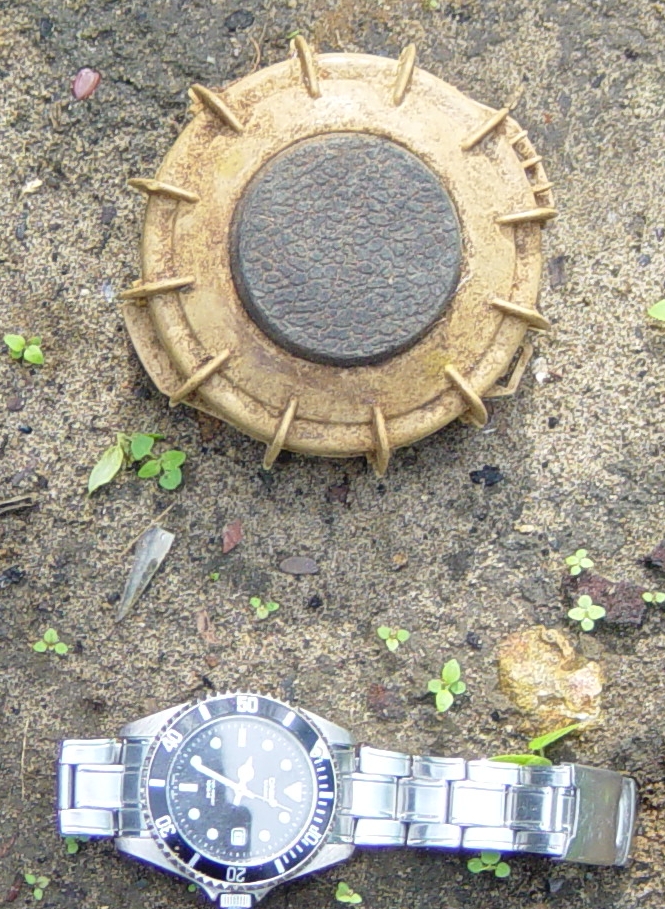|
M63 Mine
The M61 or Model 61 and M63 or Model 63 are French anti-personnel stake fragmentation stake mines the mines are sometimes called ''piquet'' (picket). The M61 is slightly larger than the M63, but otherwise the mines are similar in appearance and operation. The mines have plastic cases, and use the ALPR ID 59 fuze, which is also used in the MI AP DV 59 mine, it can also be fitted with a tripwire fuze. The mines can be fitted with a plastic detonator making the mine very difficult to detect. The M63 has an anti-lifting device, attempting to pull the mine out of the ground will result in pressure on the stakes prongs, triggering the mine. The mine has not been produced since 1982 and France has destroyed all operational stocks of this mine. Specifications References * ''Brassey's Essential Guide to Anti-Personnel Landmines'' * ''Jane's Mines and Mine Clearance 2005-2006'' Anti-personnel mines Land mines of France {{Landmine-stub ... [...More Info...] [...Related Items...] OR: [Wikipedia] [Google] [Baidu] |
Anti-personnel Mine
Anti-personnel mines are a form of mine designed for use against humans, as opposed to anti-tank mines, which are designed for use against vehicles. Anti-personnel mines may be classified into blast mines or fragmentation mines; the latter may or may not be a bounding mine. The mines are often designed to injure, not kill, their victims to increase the logistical (mostly medical) support required by enemy forces that encounter them. Some types of anti-personnel mines can also damage the tracks on armoured vehicles or the tires of wheeled vehicles. The International Campaign to Ban Landmines has sought to ban mines culminating in the 1997 Ottawa Treaty, although this treaty has not yet been accepted by over 30 countries. Use Anti-personnel mines are used in a similar manner to anti-tank mines, in static "mine fields" along national borders or in defense of strategic positions as described in greater detail in the land mine article. What makes them different from most a ... [...More Info...] [...Related Items...] OR: [Wikipedia] [Google] [Baidu] |
TNT (explosive)
Trinitrotoluene (), more commonly known as TNT, more specifically 2,4,6-trinitrotoluene, and by its preferred IUPAC name 2-methyl-1,3,5-trinitrobenzene, is a chemical compound with the formula C6H2(NO2)3CH3. TNT is occasionally used as a reagent in chemical synthesis, but it is best known as an explosive material with convenient handling properties. The explosive yield of TNT is considered to be the standard comparative convention of bombs and asteroid impacts. In chemistry, TNT is used to generate charge transfer salts. History TNT was first prepared in 1863 by German chemist Julius Wilbrand and originally used as a yellow dye. Its potential as an explosive was not recognized for three decades, mainly because it was too difficult to detonate because it was less sensitive than alternatives. Its explosive properties were first discovered in 1891 by another German chemist, Carl Häussermann. TNT can be safely poured when liquid into shell cases, and is so insensitive that ... [...More Info...] [...Related Items...] OR: [Wikipedia] [Google] [Baidu] |
Tetryl
2,4,6-Trinitrophenylmethylnitramine commonly referred to as tetryl ( C7 H5 N5 O8) is an explosive compound used to make detonators and explosive booster charges. Tetryl is a nitramine booster explosive, though its use has been largely superseded by RDX. Tetryl is a sensitive secondary high explosive used as a booster, a small charge placed next to the detonator in order to propagate detonation into the main explosive charge. Chemical properties Tetryl is a yellow crystalline solid powder material, practically insoluble in water but soluble in acetone, benzene and other solvents. When tetryl is heated, it first melts, then decomposes and explodes. It burns readily and is more easily detonated than ammonium picrate or TNT, being about as sensitive as picric acid. It is detonated by friction, shock, or spark. It remains stable at all temperatures which may be encountered in storage. It is generally used in the form of pressed pellets, and has been approved as the standard burs ... [...More Info...] [...Related Items...] OR: [Wikipedia] [Google] [Baidu] |
Anti-personnel Mines
Anti-personnel mines are a form of mine designed for use against humans, as opposed to anti-tank mines, which are designed for use against vehicles. Anti-personnel mines may be classified into blast mines or fragmentation mines; the latter may or may not be a bounding mine. The mines are often designed to injure, not kill, their victims to increase the logistical (mostly medical) support required by enemy forces that encounter them. Some types of anti-personnel mines can also damage the tracks on armoured vehicles or the tires of wheeled vehicles. The International Campaign to Ban Landmines has sought to ban mines culminating in the 1997 Ottawa Treaty, although this treaty has not yet been accepted by over 30 countries. Use Anti-personnel mines are used in a similar manner to anti-tank mines, in static "mine fields" along national borders or in defense of strategic positions as described in greater detail in the land mine article. What makes them different from most anti- ... [...More Info...] [...Related Items...] OR: [Wikipedia] [Google] [Baidu] |

